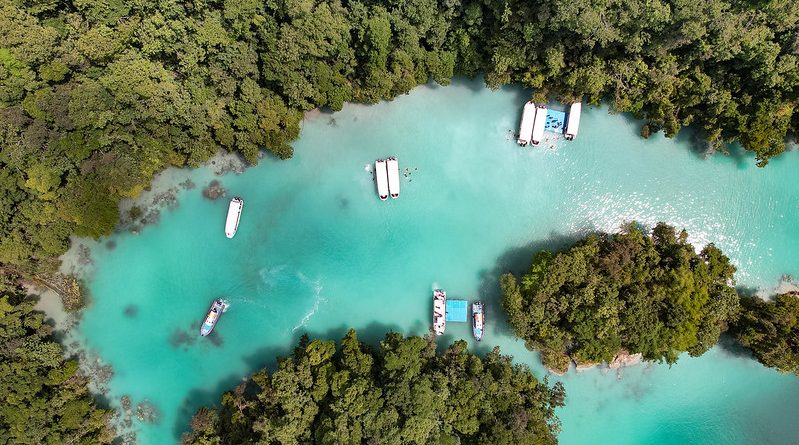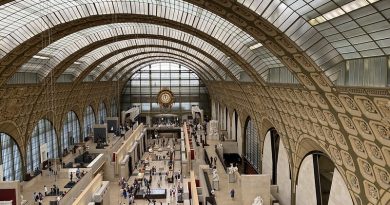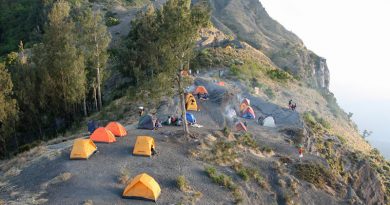Top Five Places to Visit in Micronesia
The 607 islands of the Federated States of Micronesia are spread over a 2,500 km expanse of the Pacific Ocean. Only 65 of these islands are inhabited and they are divided into four groups. Here are our top places to visit:
Chuuk
The state of Chuuk is renowned for its diving amid beautiful beaches scattered with coconut palms. Surrounding the islands is a marine graveyard of World War Two Japanese ship wrecks. Dining tables, among many other artifacts, are preserved exactly as they were left 50 years ago, covered in a garden of coral. The Chuukese still live, cook and fish traditionally and they are particularly known for their carving skills. The use of the Chuukese wooden carved ‘love stick’ is part of a legendary practice of courtship unique to this island group.
Yap
Greater Yap island group lies in the south west. The island group comprises of Yap, Tomil-Gagil, Map, and Rumung. Yap has a number of small hotels i that cater to divers, sightseers and those wanting a closer look at the culture. The environment of Yap differs from the other Micronesian islands in two ways:
The first is geological .The island was formed by a constructive fault line as opposed to volcanic activity as is the case with most of the islands above sea level. This has resulted in a landscape of rolling hills and mangrove forests rather than mountainous terrain.
Yap also differs from most of the other islands because it is still very traditional.Come here for Yap Day in March All customs and traditions are preserved as much as possible. The chief of the clan still holds the highest respect and unusually on Yap descent is traced paternally through the father. Houses are still built in the traditional method using mahogany supports underneath Nipa palm-thatched roofs. The Micronesians were the original seafaring explorers and they still make canoes traditionally. Carved out of the breadfruit tree and bound with coconut husk fibres, they can be up to 30 metres (100 feet) long.
Pohnpei- home of Nan Madol
Pohnpei is the largest and longest of the Micronesian islands and its main city, Palikir, is the capital of the Federated States of Micronesia. As the island is so mountainous there is high rainfall and 40 rivers run down from its mountains. Pohnpei is home to Nan Madol, Micronesia’s most impressive archaeological site, which has become known as the Venice of the Pacific . It dates back to the thirteenth century during the Saudeleur Dynasty. The ruins have collapsed but it is still an impressive structure that used to house temples, vaults, bathing areas, and pools. Called the ‘Venice of the Pacific’, Nan Madol was a manmade city with ocean-filled channels which once housed a thriving, royal civilization. Tours can be arranged on the island.
As a complete structure Nan Madol would have been awe inspiring. It was architecturally magnificent, built from basalt pillars – in a similar way that you might build a log chalet – with the logs layered in opposite directions. Instead of logs, the naturally formed crystalline blocks of basalt were transported a long way form their source to the site.
Archaeological evidence and oral traditions relate that Nan Madol was the administrative and religious centre (Madol Pah) of Pohnpei. The labor costs and power commanded to build such structures from basalt were huge, showing that the Saudeleur must have been very powerful kings. It is said that Isokelekel, the people’s hero, was instrumental in overthrowing the Saudeleur and replacing them with the Nahnmwarki whose heritage stills lives on with the islanders today.
Nan Madol is thought to have had religious or ceremonial significance. Priests are thought to have overseen mortuary practices and the day-to-day living of nobility who inhabited Nan Madol.
There were two separate areas: one for the living and another for the dead. It is thought that a population of less than a thousand lived in Nan Madol. Madol Powe, the mortuary part of the site, was spread over 58 islets in the northeast of the complex. Other islets in the complex seem to have been assigned specific functions where priests carried out practical tasks like coconut oil preparation.
Kosrae
A few hours southwest of Hawaii, Kosrae is the ultimate beach holiday destination. It has pristine white sand beaches, virgin reef, an interior of uncharted rainforests, and ancient archaeological sites to amble around. There are the wrecks of two whaling ships, dating back to the 1800s, for divers to explore. With visibility of more than 200 ft, diving is a must, but non-divers will see resident dolphins and Spot whales. It is well worth exploring Mount Finkol, the tallest mountain in Kosrae at 2,064 ft.
Palau’s Rock Islands
The Republic of Palau (known locally as Belau) is a separate principality southwest of the Federated States of Micronesia. Palau is a group of 343 islands spread over a 100 mile stretch.
Lying south of Kokor, the 200 formations known as the Rock Islands are uninhabited rounded, jungle covered islands. They are limestone formations which appear to float on the water due to the fact that the bottoms of the islands are narrower than the tops.
Palau is famous as an exceptional dive spot. Tourists come here to experience dive sites such as Blue Corner, Peleliu Express, and Ulong Channel where they can experience blue holes (dark blue subterranean caverns), drop-offs (under water cliffs), crystal caves, pristine reefs, and Japanese World War Two wrecks. The icing on the cake, however, is not only to experience these islands from beneath the water but to take a sea kayaking trip above the water through the islands.
Sea kayaking around the Rock Islands allows you take stock of Palau in a way that diving does not. If you leave having only dived in this region you will have missed out on the terrestrial ecosystems and undiscovered world of the marine lakes and those that depend on them.
Destination – Micronesia




